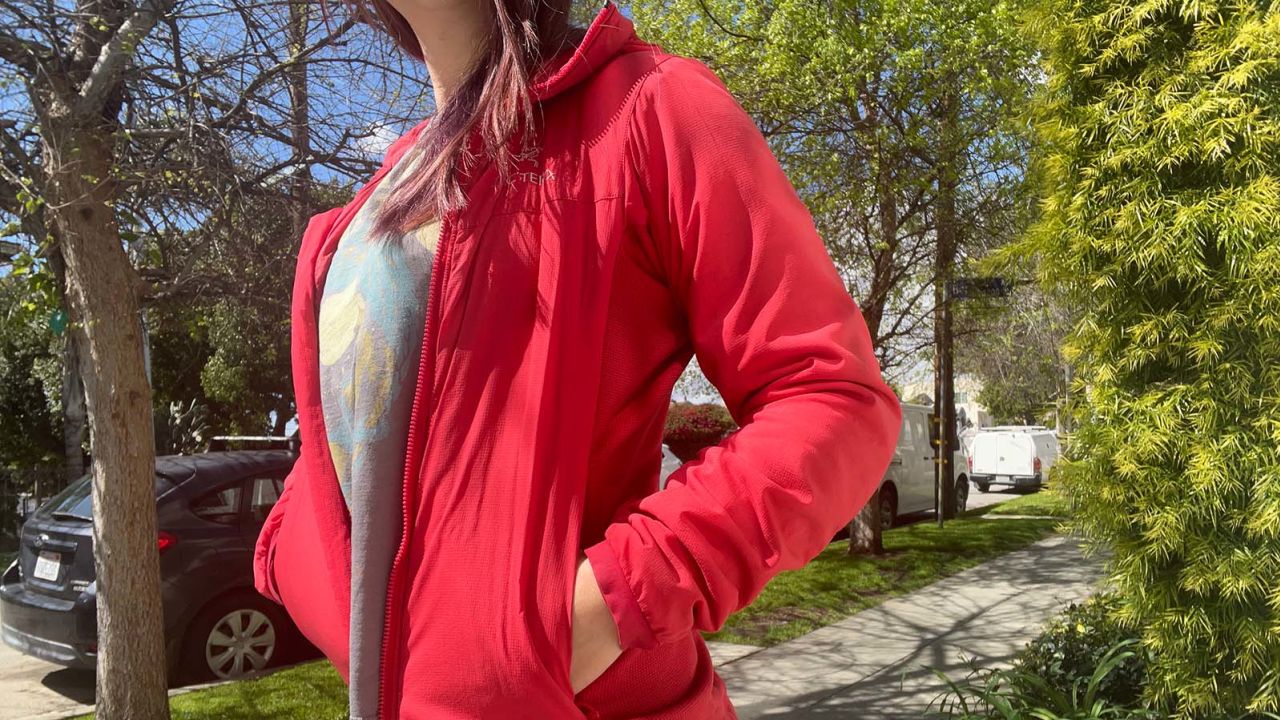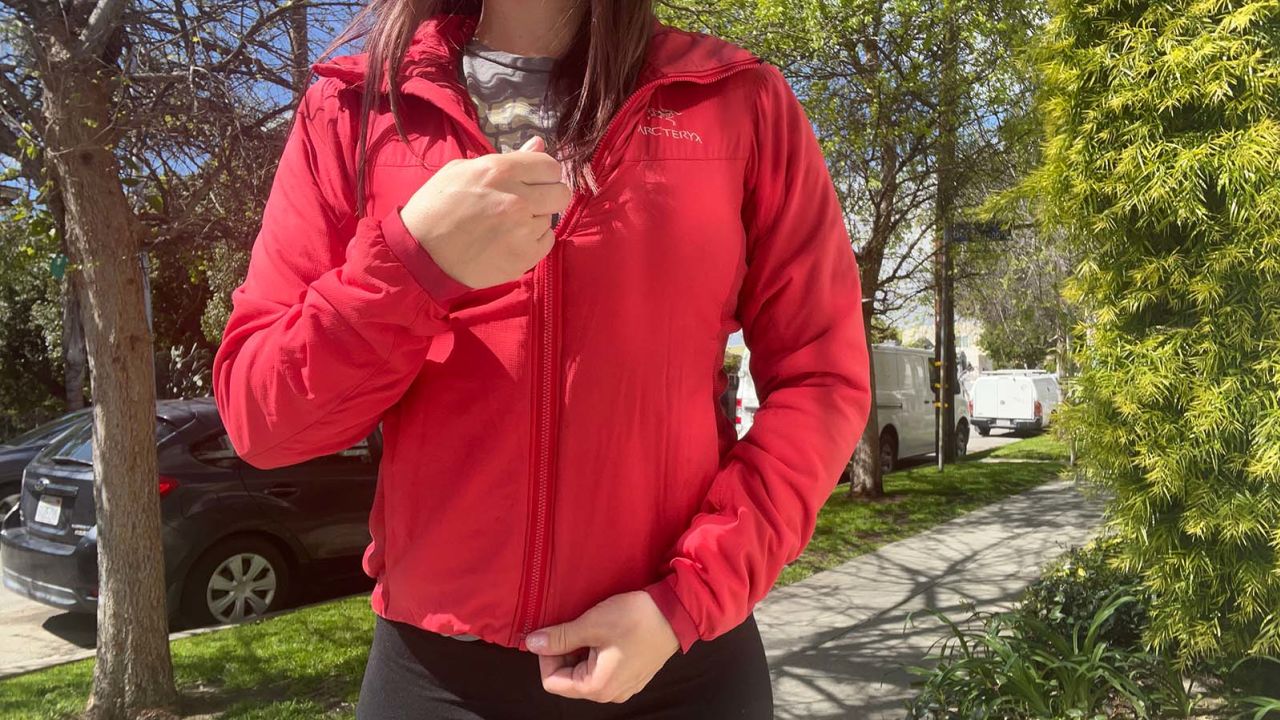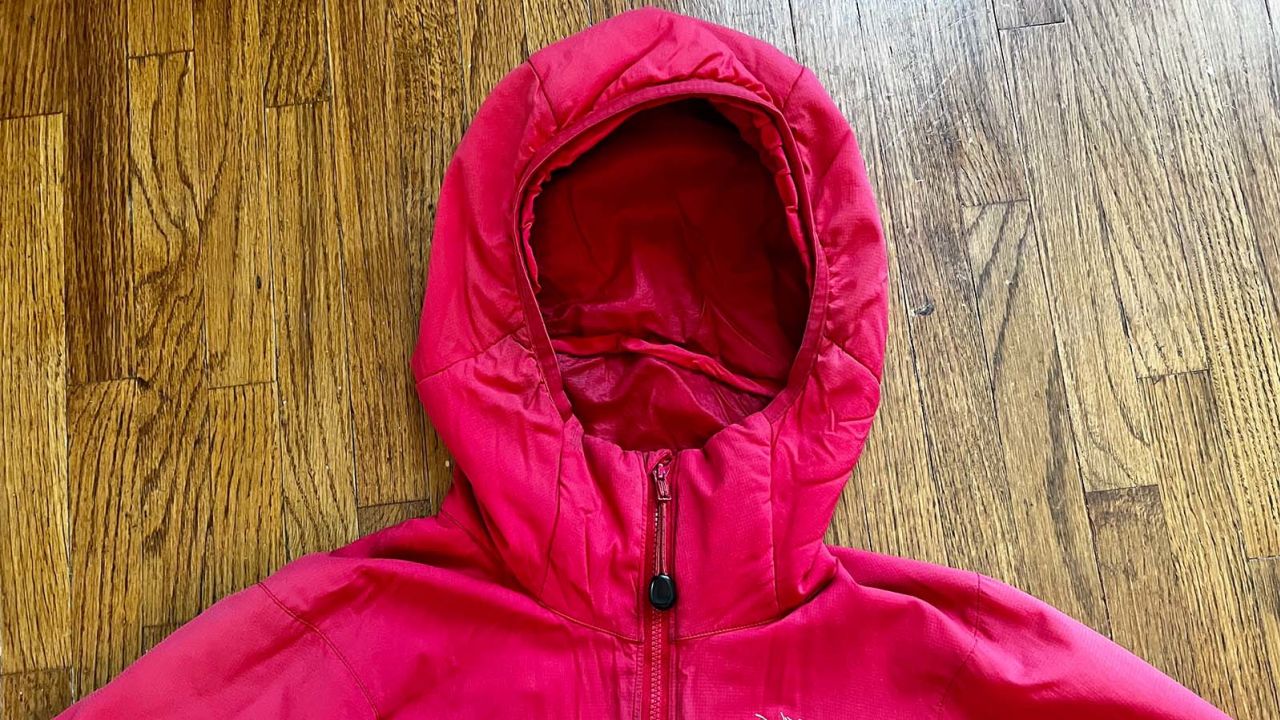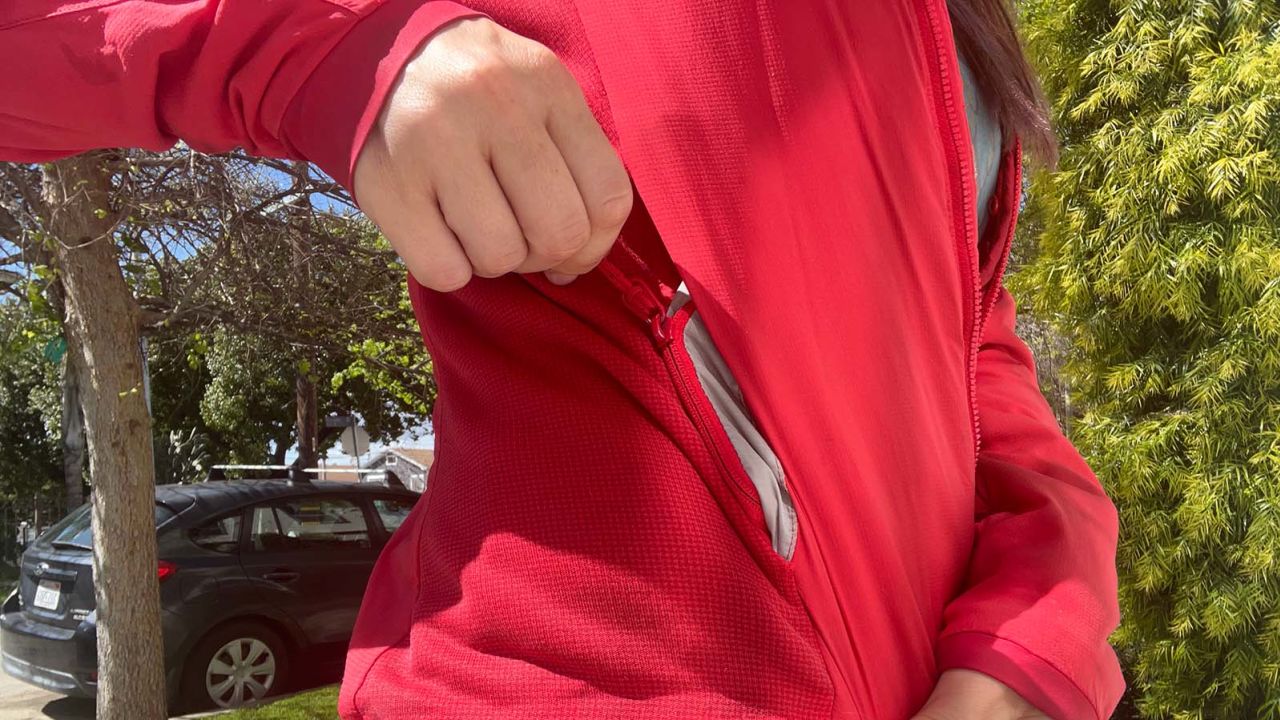Having your layering strategy down to a science is critical when exploring high-altitude peaks, venturing out in shoulder season or on summer backpacking trips in the mountains. Whether you’re exploring Utah’s high desert or Montana’s Northern Rockies, once the sun sets, the temperature is likely to drop far and quickly.
Hailing from British Columbia, an area known for its snowy alpine summits and gray, drizzly weather, Arc’teryx is often considered the best of the best when it comes to designing lightweight, breathable, insulated layers that wick sweat while keeping your core toasty. The Atom Hoody has been around for ages, and it’s a staple of this warm, weather-shedding ethos.
I’ve had my Atom for just over six years, and it’s still going as strong as the day I purchased it (albeit a little stained from too many morning cups of cowboy coffee). It’s the first thing I throw into my pack as an extra layer on sunny SoCal day hikes and the middle layer that keeps me safe and dry when I’m charging down ski slopes or backpacking through the Himalayas. Let’s get into what makes this piece so great.
Arc’teryx’s Atom Hoody is a versatile insulated jacket that belongs in virtually everyone’s pack, whether you’re out on a shoulder season day hike, skinning up a snow slope or enjoying a drizzly Pacific Northwest stroll. It sheds mellow precipitation with ease and offers breathable warmth for cold weather cardio. Warmer than your regular old hoody but lighter than your bulky puffy, the form-fitting Atom features synthetic insulation and stretchy fleece panels, and it’s available in both men’s (named the Atom LT Hoody) and women’s sizes.
As one of the lightest in its category (10.9 ounces for the women’s model), the Atom Hoody offers breathable synthetic warmth for uphill winter pursuits and shoulder season excursions where you need an extra layer but don’t want to sweat through your big puffy. The outer fabric is soft, durable and great at shedding light weather, while intuitive, zippered pockets mean your valuables won’t get lost.

If you live in the dreary Pacific Northwest or like to head out in snow flurries, the Atom Hoody’s water-resistant Tyono 20 face fabric will feel like a godsend. It manages to stay miraculously breathable while allowing precipitation to ball up on the outside of the jacket so that you don’t get soaked to the bone. On an REI expert-led basic mountaineering course near California’s Mount San Antonio, my group got tossed into a mellow snowstorm while hiking up an icy slope. Others in my group had to stop and whip out their rain shells, but I happily noticed that the Atom Hoody was doing its job perfectly — repelling the flakes while keeping me cozy.
Down is great for a lot of things in the outdoor world, but staying warm in wet weather is not one of them. At 10.9 ounces, the Atom Hoody rivals many of its down cousins in terms of weight, and the synthetic insulation is not only vegan, but it’s also superior at holding its loft and insulation when a storm rolls in. Tack on the stretchy performance fleece side panels, and you’ve got yourself a comfortable outdoor jacket that’s breathable where you need it and warm where it matters.

About a year after I bought my Atom Hoody, I had a zipper failure that broke my heart. The central zipper that made the entire jacket a jacket had split and didn’t want to close back up, ever. Luckily, Arc’teryx has a guarantee that, if it’s not looking ragged and overused, your gear should not fail for its “practical product life span.” So, I brought my piece into the Los Angeles store, spoke to a representative and was able to get a new zipper sewn in for free. It was good for my wallet and great for the environment.
The brand labels its Atom Hoody as having a “fitted fit,” meaning that it’s designed to stay close to the body throughout the chest, waist and hip while still allowing for natural freedom of movement when climbing or trekking. Personally, I love this design, because, unlike my bulky down puffy, I can go out to a brewery after hitting the trail with my friends and not have to worry about looking and feeling like a marshmallow.
When a product has been the staple of an established brand for over a decade, major flaws tend to get tweaked and worked out. That being said, there were a few small things we didn’t love about the Atom.

Yes, the Atom Hoody is a whiz at shedding light precipitation (like those pesky PNW drizzles or spring snowfall), but when left in a heavy downpour for an extended period of time, the outer Tyono 20 fabric does soak through, leaving you wet. The good news? Because the interior is stuffed with Coreloft Compact 60 insulation, it’ll keep insulating even when drenched.

I can’t stress enough that this jacket, though insulated, can’t quite hold up to the warmth of my less flattering puffies. I’ve brought it along on a warm July backpacking trip in the High Sierras, sure, but only when I knew that the low would never dip below 45, and I had an excellent sleeping bag in tow, just in case. For four-season comfort (or staying extra toasty on the trail), try the Atom Heavyweight Hoody, which is basically the same model with added insulation, or the Beta Insulated Jacket.
Like with many Arc’teryx products, the Atom Hoody comes in at the higher end of “normal” in its category. If you’re looking to save a little dough, Kuhl’s The One Insulated Hoodie and REI Co-op’s Flash Insulated Hybrid Hoodie both come in at just under $180. For fans of groovy, psychedelic colors, Cotopaxi has a bold choice with its Teca Calido Hooded Jacket, for just $150. As is common with outdoor gear, you often get what you pay for, and the Arc’teryx Atom is lighter and more breathable than other hooded zip-ups in its class.

Arc’teryx has done it again with the Atom Hoody, creating a slim-fitting, versatile jacket that’s just as at home skinning up a snowy peak as it is on an autumn leaf-peeping day hike in the foothills. It sheds light weather with ease while remaining ultra breathable for cold weather cardio. While I wish it were just a touch warmer so I could bring it on more summer backpacking trips, it’s still the first thing I throw into my day pack at any time of year to add a cozy extra layer that’ll hold up in the wind, light rain and snow.



